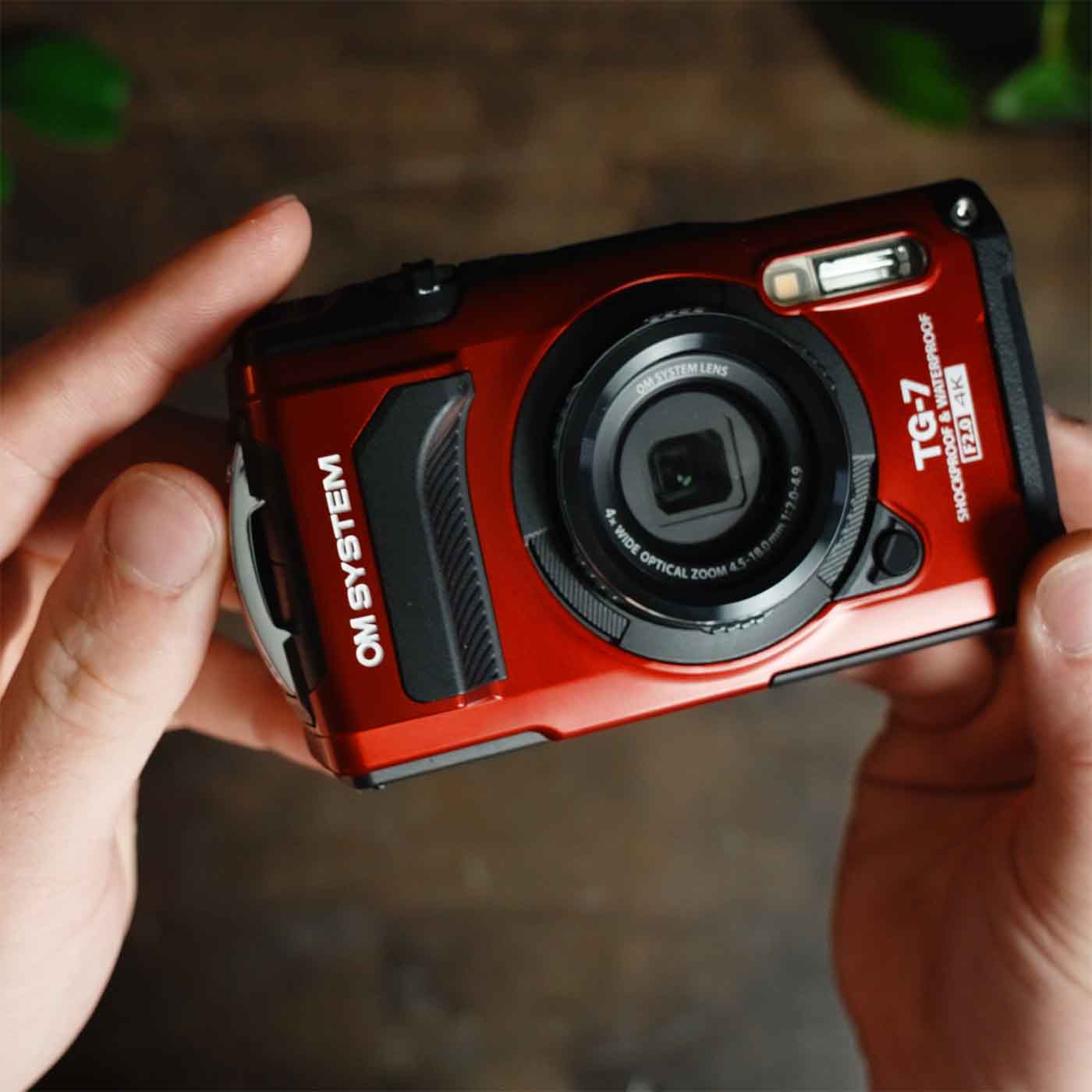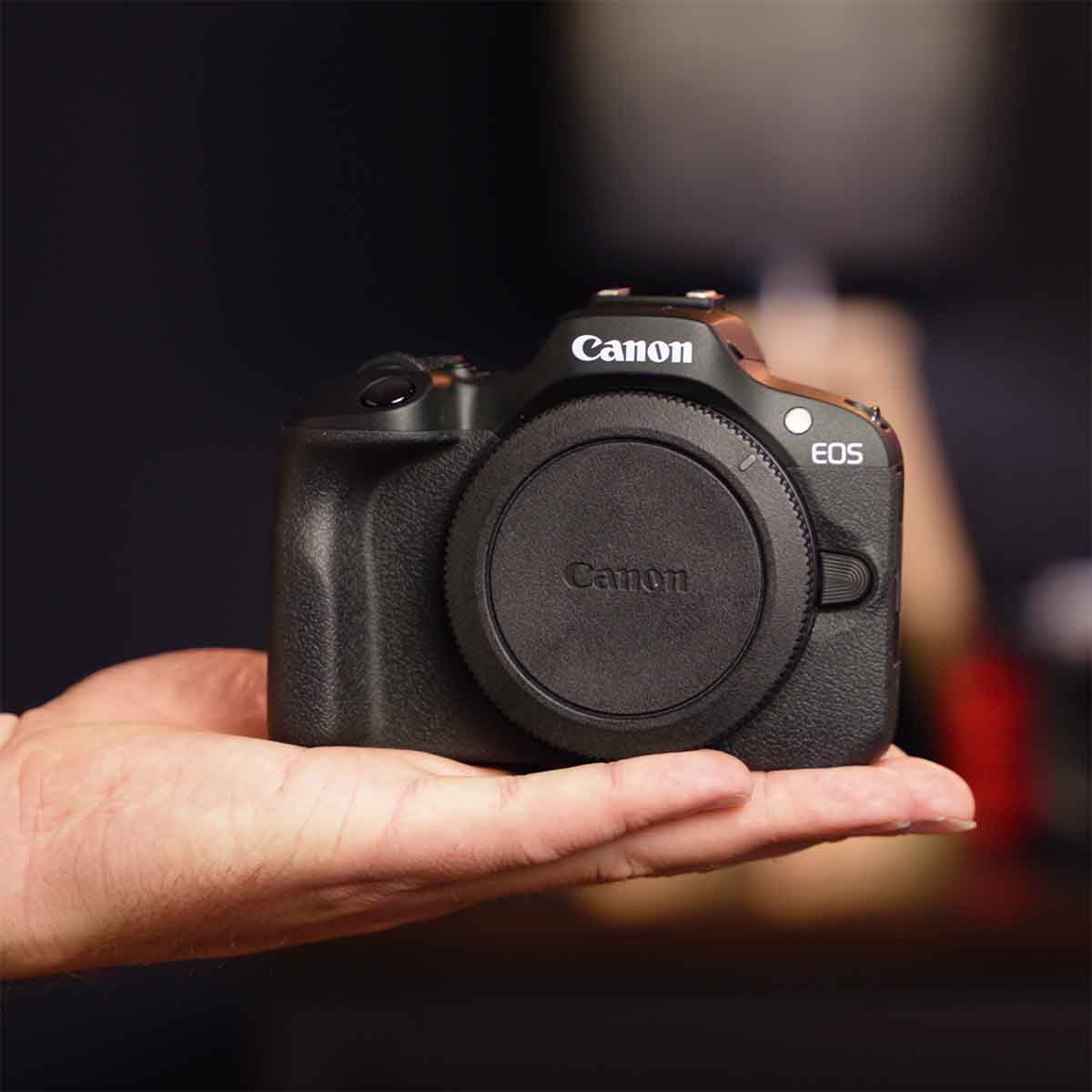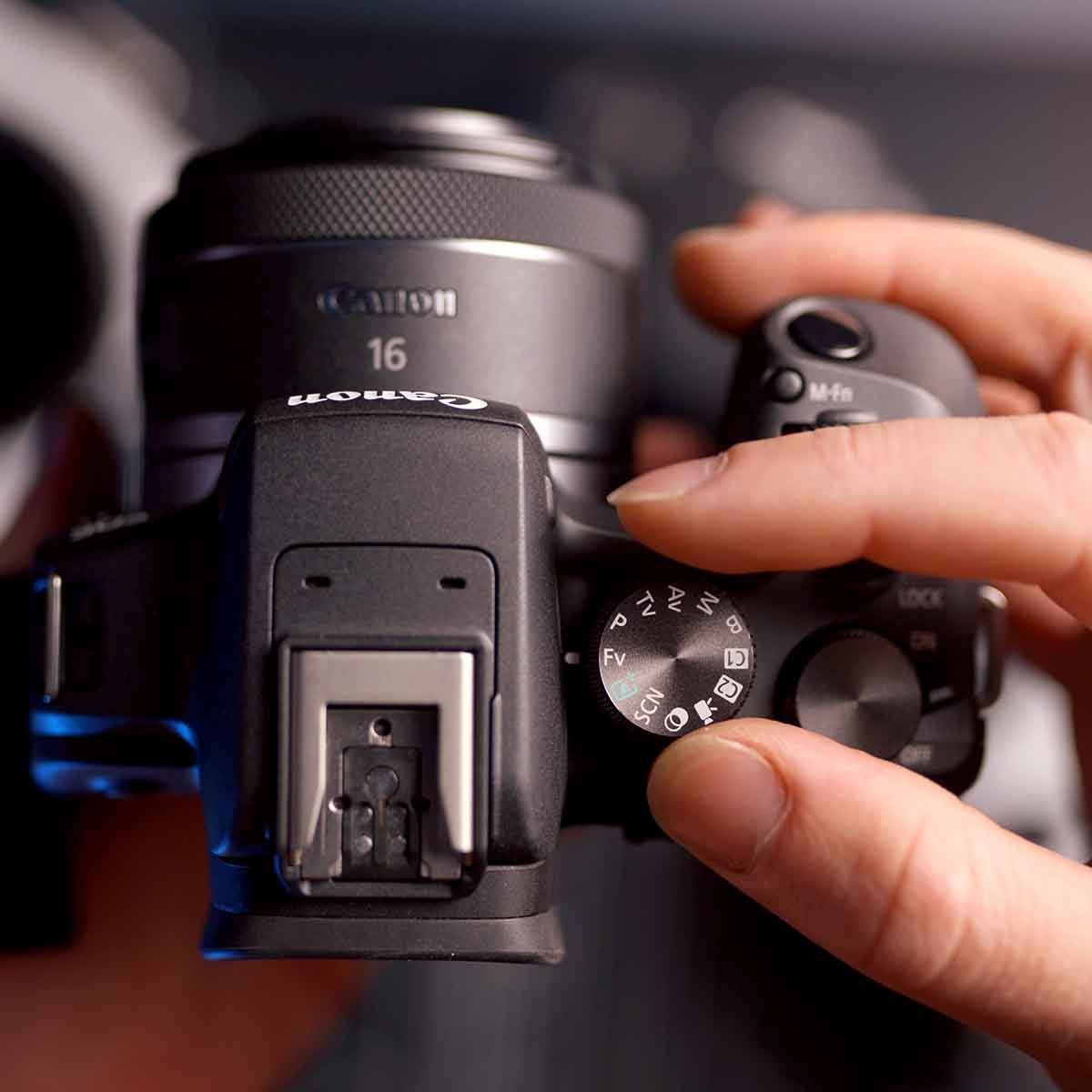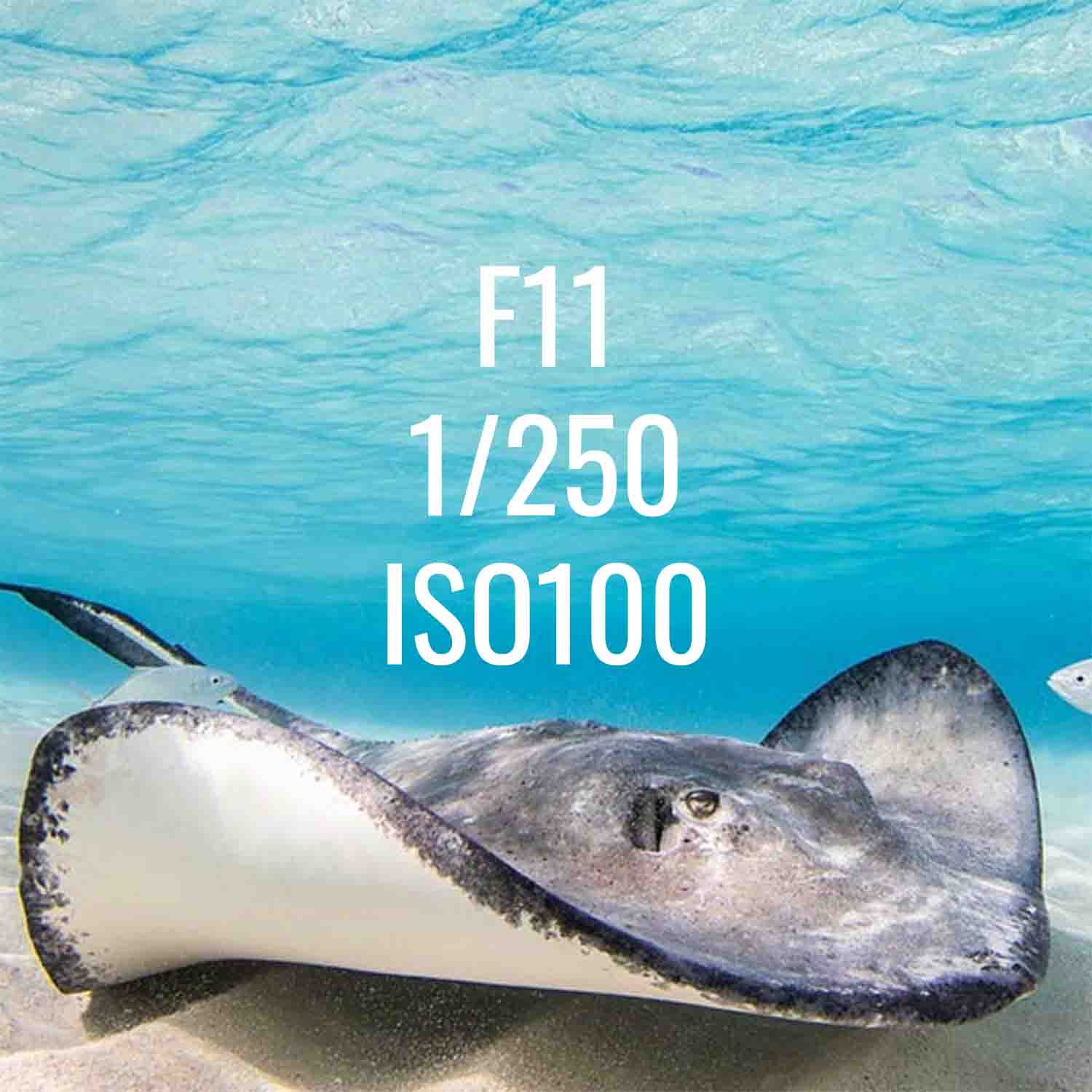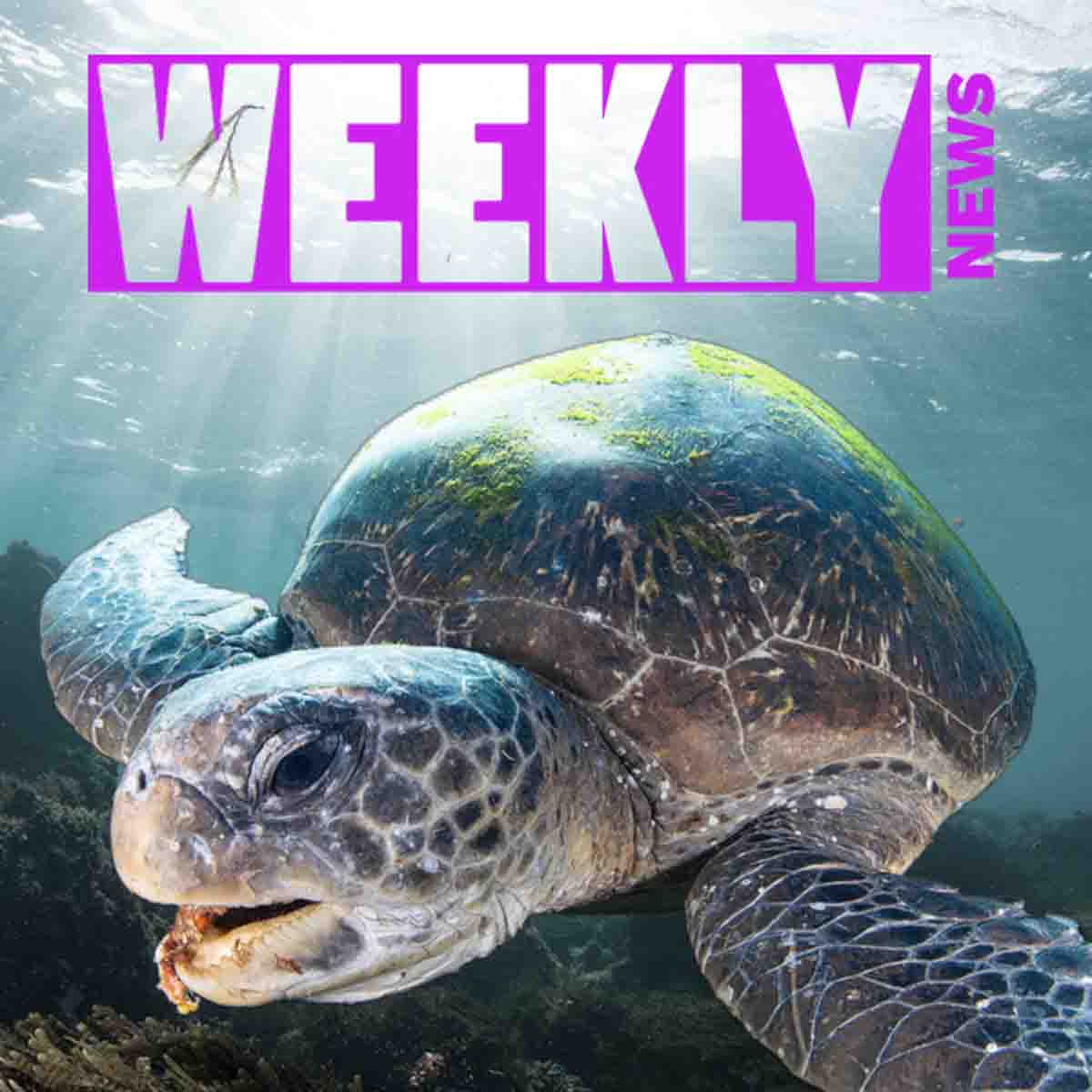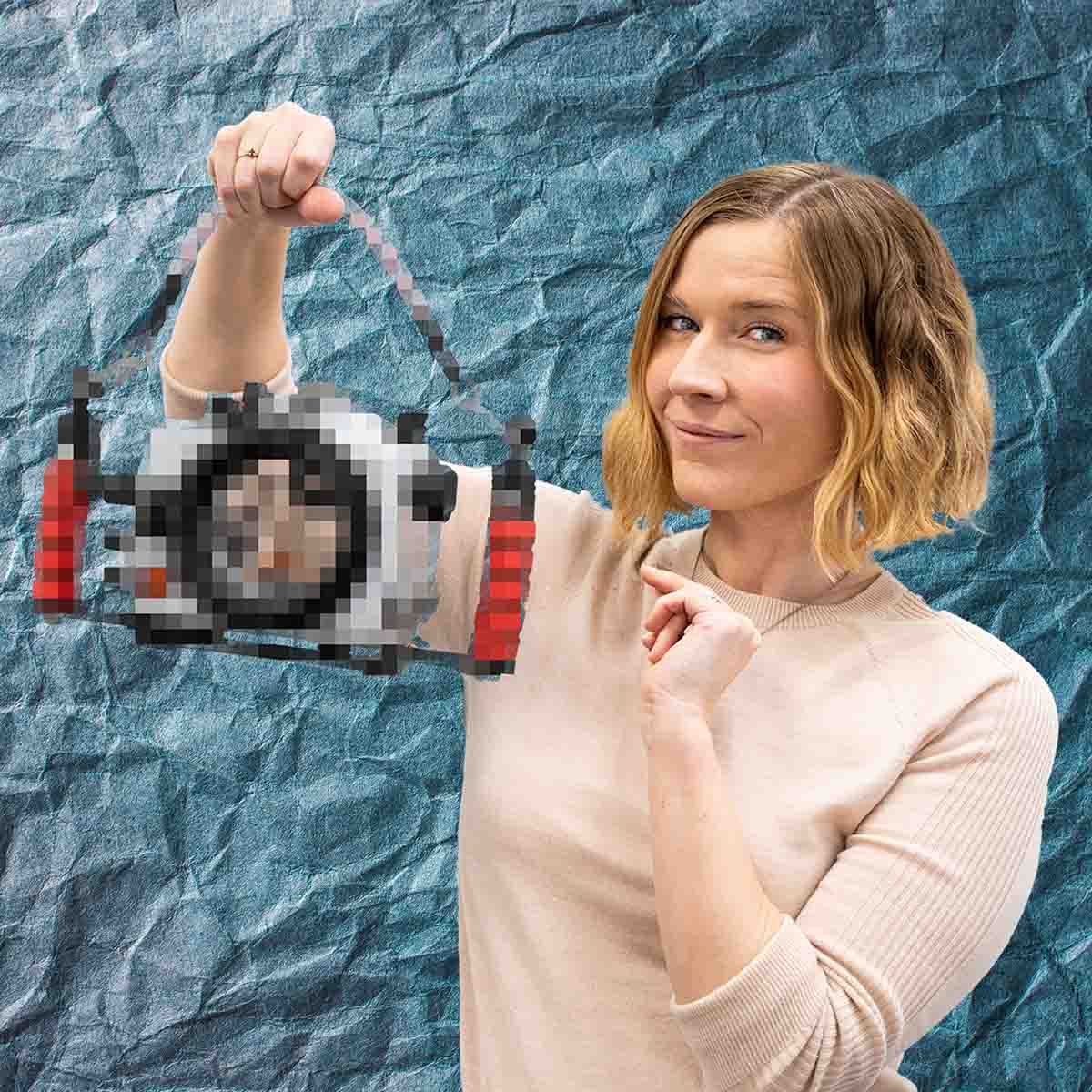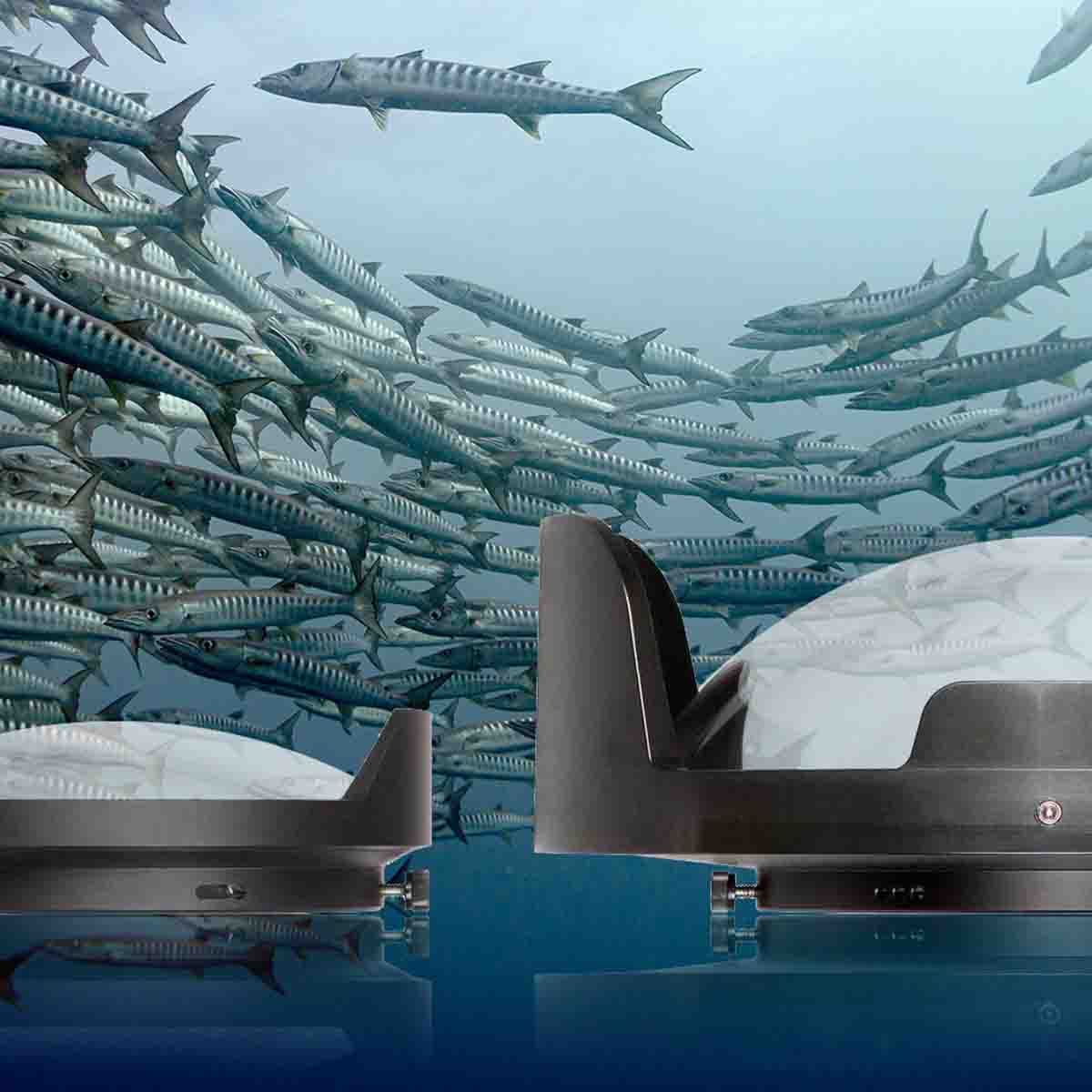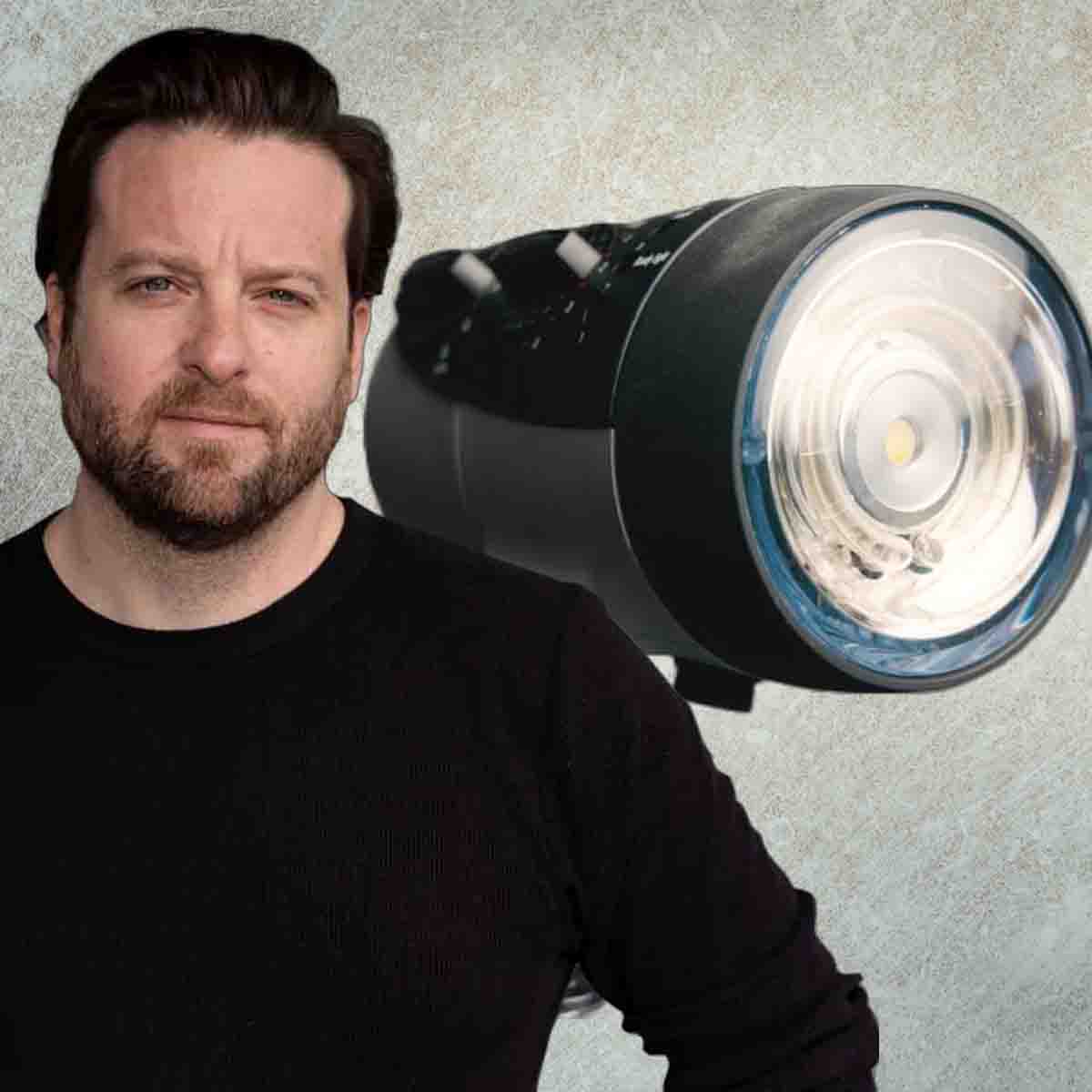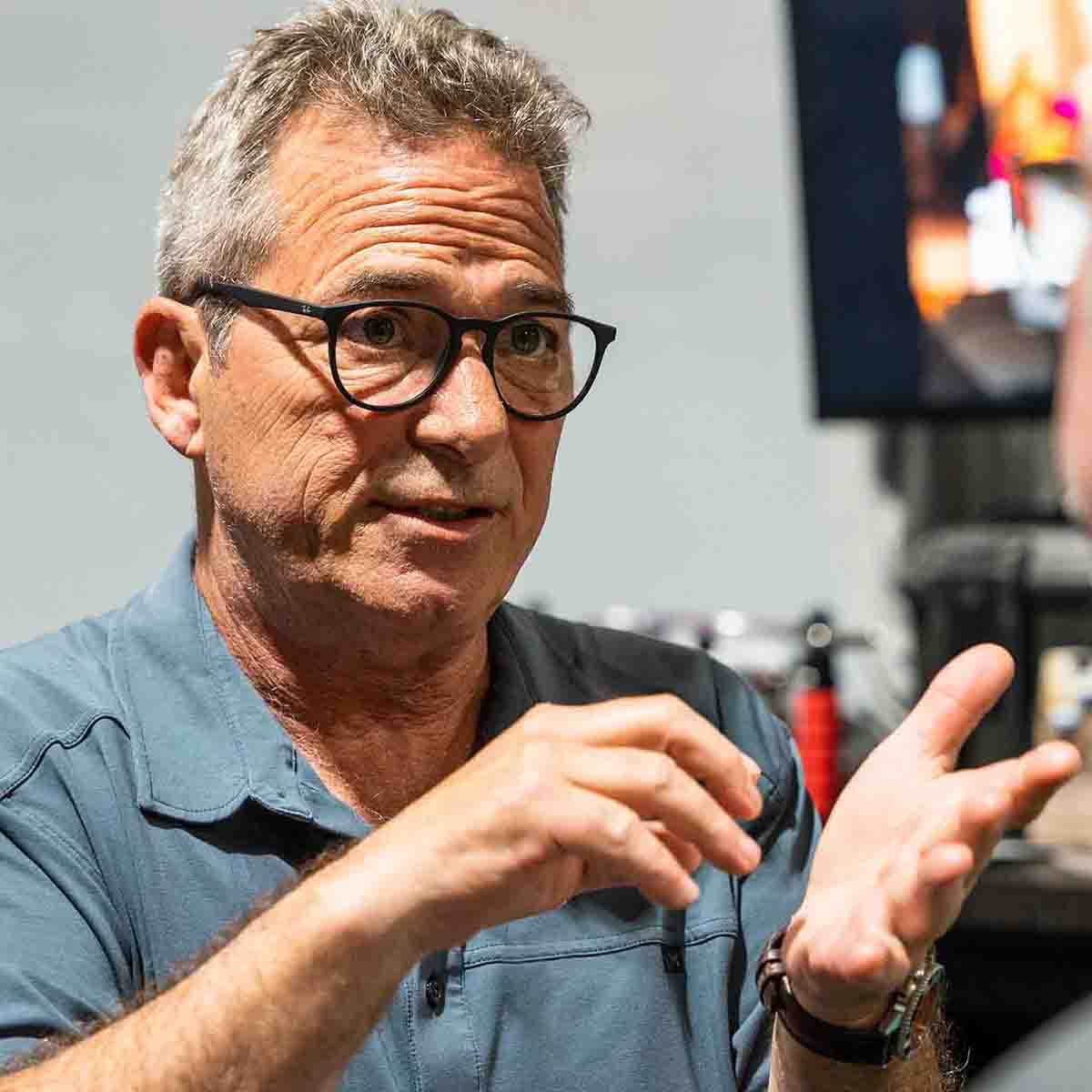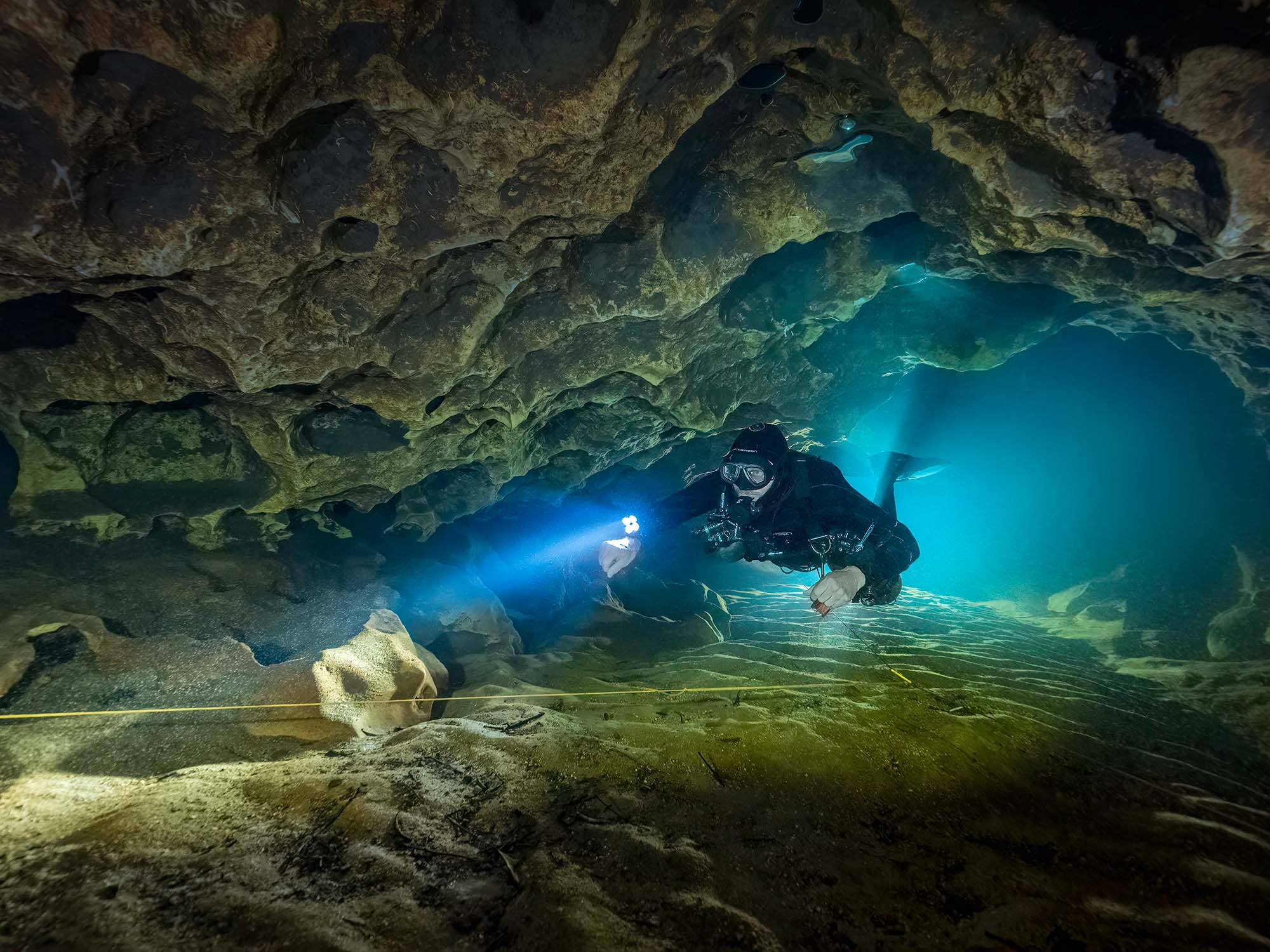By Rowan Dear
I have been very fortunate to swim with three different types of large whales- Sperm, Humpback and Southern Right Whales. The experience of being up close with these ocean giants is like no other experience from my last eight years of diving. I love to be able to capture these moments with my camera to share with other people just a small portion of how incredible it can be.
In this article I will discuss where you can encounter these whales, how to best interact with them to get the encounters you want, and what settings to use to make sure you execute those dream shots you picture in your mind.

Humpback whale calves can be quite curious. Sony a7 IV + FE 16-35mm F2.8 GM lens at 16mm • 1/320 • f/11 • ISO 500 © Rowan Dear
What Interactions Can You Expect
Humpback Whale
Humpback whales migrate annually between feeding and breeding grounds. During summer, they inhabit polar regions like Antarctica, feeding on krill and small fish. In winter, they journey thousands of kilometres to tropical waters, such as Tonga or French Polynesia, to mate and give birth. These migrations are among the longest of any mammal.
When choosing the time of year to visit any of the above destinations, you need to consider what kind of behaviours you would like to witness. Obviously these behaviors are not guaranteed, and this serves as only a guide to cycles of the whales.
July-August
- Mating Displays: Male humpbacks engage in songs and competitive group behaviours to attract females.
- Courtship: Pairs can be seen interacting closely.
-
Breaching: Whales leap out of the water, possibly as a display or communication.
August-September
- Calving: Females give birth in sheltered bays. Mothers and calves often surface together, with calves learning essential skills.
-
Nurturing: Mothers nurse and protect their young, often staying close to the surface.
September-October
- Bonding and Play: Calves grow more active and playful, practicing breaching and tail slapping.
- Preparation for Migration: Whales begin building strength for their return journey to feeding grounds.

Mother and calf. Sony a7 IV + FE 16-35mm F2.8 GM lens at 35mm • 1/320 • f/8 • ISO 500 © Rowan Dear
Southern Right Whales
Southern Right Whales go to the calm waters of Patagonia between June-September to rest with their calves before they journey South. The majority of whales you encounter there during that time period are mothers and calves resting calmly in the bays. They are very curious whales, and more often than not we would have several coming to check out our boat, as well as the diver in the water. I was also fortunate enough to witness a male attempting to mate with a female, as well as babies and adults breaching from the water.

Southern right whale relaxing at the surface. Sony a7 IV + DT 8-15mm F4 at 14mm • 1/500 • f/9 • ISO 800 © Rowan Dear
Sperm Whales
When I think of sperm whales, two images spring to mind- groups or individuals sleeping vertically in the water column and large numbers of them gathering and socialising together. We were fortunate to witness all these behaviours multiple times, as well as one curious baby with its mouth wide open wagging its tongue at me.

Sperm whales gathering at the surface for some socialisation. Sony a7 IV + FE 16-35mm F2.8 GM lens at 16mm • 1/320 • f/7.1 • ISO 400 © Rowan Dear
How To Get The Shot
Most of the time whales are very rarely just sat on the surface waiting for you to take a nice picture of them, they are mostly moving and very dynamic in the water. Although this can happen, you are more likely to see this with Southern Rights and Sperm whales than with Humpbacks.
Some of the behaviours you may witness are going to be incredibly fast paced and possibly only give you a few seconds to 30 seconds to allow you to get the shot you want. Being agile in the water, anticipating their moves, and having your settings locked in are critically important.

Two Southern Right whales hang at the surface ready for a photo, an uncommon but welcomed behaviour. Sony a7 IV + DT 8-15mm F4 at 15mm • 1/400 • f/6.3 • ISO 500 © Rowan Dear
When it comes to guessing a whale's next move as it swims towards you, there’s no hard and fast rule. But what you want to make sure is that your actions don’t disturb the whales and ruin the whole experience for yourself and for your group. If your presence is not welcome then back off and give the whales space; their wellbeing is your most important priority, not chasing them to try and get the shot. I can guarantee that any image you take this way will not be the one you wanted and won’t be worth it, the images taken on the whales’ terms are always the best ones
Wait patiently and observe the whales for as long as you can and get a feel for how they are behaving and if they have registered your presence or if they're caught up in the moment. During mating, heat runs, etc. they can be very dangerous situations for you to get involved with and could cause injury for you, and no shot is worth that.

Split shots offer a more dynamic perspective. Use the zone focus area and focus on the lower half of the image so the whale is the focal point. Sony a7 IV + FE 16-35mm F2.8 GM lens at 16mm • 1/400 • f/10 • ISO 400 © Rowan Dear
The intro image to this article was taken with three humpback whales playing/fighting on the surface with each other, displaying behaviors such as breaching, pec and tail slapping on the water as well as nudging each other. I hung back and watched for a long time before moving slightly closer at the right moment to capture this image where all three humpback whales are looking directly at the camera. It is undoubtably one of my favourite whale images, firstly because of the composition and secondly because of the patience (and some luck) it took to get the shot.
When sperm whales socialise together they gather in large groups and can be a lot more chilled on the surface and below, and stay around for a while allowing you to take time and compose the shot you want and get your settings right. But again, read the situation and ask your guide if it's ok to move closer in.
Setting Up Your Camera
Your first decision is which lens to go with- whilst some of the encounters I had it would have been great to have a fisheye lens, most of the time encounters were far away so a fisheye would have been way too wide. I mostly went with the Sony 16-35mm GMaster lens, which was perfect for being able to zoom in and out when required. With the Southern Right whales I mostly shot with my fisheye as most encounters were close and visibility was often not great, meaning I needed to be very close to get the shots I wanted.

Shutter Speed
Firstly check what your camera's native ISO is (this will matter when it comes to post editing and bringing back shadows and highlights). Start off with around 1/320 or 1/500 and adjust if you need to. I shot entirely between this range and found I never had to go any higher despite sometimes having a fast moving baby.
F-Stop (Apterture)
On certain days the light is going to be changing a lot so you need to adjust your camera accordingly and quickly, if you have overexposed shots then no amount of post production is going to bring back that lost detail. Start off around F8 and dial up or down when required as you don’t want to miss the shot. The whales could be fast moving so as they move past, you could easily go from shooting with the sun behind you to shooting more towards the sun, or one minute the sun is fully out, the next second a cloud comes over and it’s a lot darker.
ISO
Most cameras are capable of shooting with a high ISO, but as your shots will predominantly be on the surface (depending where in the world you are) I would pick ISO 400 for my camera and stay there and focus on adjusting my aperture when needed.

Sperm whale calf wagging its tongue. Sony a7 IV + FE 16-35mm F2.8 GM lens at 16mm 1/320 • f/8 • ISO 400 © Rowan Dear
Focus Area
This may depend on your camera and what capabilities it has, but it may also change given the conditions, the light, the encounters you are having.
I would choose between one of these three: Center, Zone, and Wide (Sony also has a tracking Expand Flexible Spot which I like to use for smaller subjects but not so much for whales).
-
Centre Point Focus is good if you are trying to get a detailed eye shot like below, and you just want to line up the eye in the middle of your shot and pull trigger. This is great if low light or choppy surface conditions and bubbles may be in the water, that way the camera isn't searching for what to focus on.
-
Zone is good for similar reasons as above, but you can move the zone around to an area you want. If you are shooting split shots zone might be a good choice. Put the focus zone below center so it picks up the whale to focus on and nothing above. I may also choose this for close up detailed shots, and again days of low visibility and lots of bubbles.
- Wide is your standard for wide angle photography and for most cameras will be great for photographing big subjects like whales which will probably fill your frame.

Center point focus is great for shots like these, up close image of a Sperm whale's eye. Sony a7 IV + FE 16-35mm F2.8 GM lens at 35mm • 1/320 • f/7.1 • ISO 400 © Rowan Dear
Bubble Trouble
One thing that can ruin all your shots is bubbles forming on your dome port. This can happen because of swell pushing lots of water around, or the whales splashing around. So make sure you use your hand to wipe the bubbles off your dome port regularly otherwise your camera will focus on the bubbles and not the subject and you will not get a sharp image at all.

Southern Right whale breaching the surface. Sony a7 IV + E 70-350mm G OSS lens at 191mm • 1/1600 • f/13 • ISO 500 © Rowan Dear
Final Thoughts
- Choose your lens wisely. Whilst whales can be very several metres in length, a lens which is too wide or a fixed lens gives your no flexibility when you are shooting whales that are not that friendly and are far away.
- Set your shutter speed, then play around with your ISO and F-Stop, depending on the lighting conditions.
- Clean the bubbles off your dome port regularly.
- Select the focus mode that is best for you, your camera, and the conditions.
- Do not jeopardise your safety, or the whales for the shot. It's not worth it, and you will ruin it for everyone.
- Occasionally, put the camera down and just enjoy the experience of swimming with these gentle giants.
Additional Viewing
Kingdom of Tonga Underwater with the Humpback Whales [VIDEO]
Gray Whales, Blue Water | Photographing Humpback Whales in Moorea
Planning a Trip to Tonga to Swim with Humpback Whales
Featured Customers | Rowan Dear Entering the Water With a Clear Vision
Leafy Sea Dragon Photography 101: Styles, Tips, and Technique

Rowan Dear grew up in Wales, UK where he fostered a love of the outdoors and discovering new animals to identify. In 2010 he relocated to Australia and seven years later overcame his fear of water and took an Open Water course. After a few years of diving in Australia, South Africa, Thailand, and the Philippines, Rowan purchased an underwater housing for his camera and his passion for underwater photography truly blossomed. He took a course with Matty Smith which taught him how to break free from Auto mode and grasp the principles of composition. His love of discovering new animals and the outdoors has remained intact and has informed much of his photography. Rowan continues to travel the world shooting underwater and remains steadfast in learning new photography techniques and building upon his solid photography foundation. Follow Rowan on Instagram @rdearphotography and visit his website www.rdearphotography.com to learn more.


